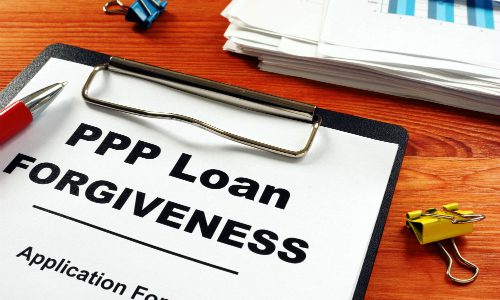In a recent article, I explained the types of expenditures for which the Paycheck Protection Program (PPP) loan proceeds may be used and the conditions under which they are eligible to be forgiven. Here, I’ll discuss how to restore your payroll to pre-pandemic levels so as to ensure maximum forgiveness for these expenses.
Many companies have had to lay off or furlough workers due to lockdown issues at customer sites. A key component of the PPP loan forgiveness is restoring your work force. Be sure to carefully review the instructions included with the application to complete the Schedule A worksheet to determine whether there will be a reduction in the loan forgiveness amount based upon a reduction in the number of full-time equivalent employees (FTEs). If there is any doubt consult your tax accountant early so you can get into compliance.
FTEs are determined based upon a 40-hour work week.
Exceptions for Reduction in FTEs
Identifying exceptions for reduction in FTE is one of the most frequent questions that we receive. The good news is that your loan forgiveness amount will not be reduced for a reduction in the number of FTEs for those employees who (i) rejected a good-faith written offer by the borrower to rehire the employee during the covered period or alternative payroll covered period; or (ii) during the covered period or alternative payroll covered period:
- were fired for cause;
- voluntarily resigned; or
- voluntarily requested and received a reduction of their hours.
FTE Reduction Safe Harbor
A borrower is exempt from the reduction in loan forgiveness based on FTE employees if the borrower (i) reduced its FTE employee levels in the period beginning Feb. 15 and ending April 26, and (ii) restored its FTE employee levels by no later than June 30 to its FTE employee levels in the borrower’s pay period that included Feb.15. This is critical; get your employees back to work before June 30.
Other Key Considerations for Integrators
There are other important considerations to stay abreast, namely around certifications and recordkeeping. The borrower must certify the following on the application:
- The dollar amount requested for forgiveness:
- was used to pay costs that are eligible for forgiveness;
- includes all applicable reductions due to a decrease in the number of FTEs and salary/wage reductions;
- does not include nonpayroll costs in excess of 25% of the amount requested;
- does not exceed eight weeks’ worth of 2019 compensation for any owner-employee or self-employed individual/general partner, capped at $15,385 per individual.
- Acknowledge that if the funds were knowingly used for unauthorized purposes, the federal government may pursue recovery of loan amounts and/or civil or criminal fraud charges.
- Borrower has accurately verified the payments for the eligible payroll and nonpayroll costs for which borrower is requesting forgiveness.
- Borrower has submitted the required documentation verifying payroll costs and nonpayroll costs.
- The information provided in the Application and supporting documentation is true and correct in all material respects and that knowingly making a false statement to obtain forgiveness of the PPP loan is punishable under the law by imprisonment of not more than 30 years and/or a fine of not more than $1,000,000.
- The tax documents submitted by the borrower to the PPP lender are consistent with those the borrower submitted/will submit to the IRS.
Note that the Small Business Administration (SBA) may request additional information for the purposes of evaluating the borrower’s eligibility for the PPP loan and for loan forgiveness, and that the borrower’s failure to provide information requested by the SBA may result in a determination that the borrower was ineligible for the PPP loan or a denial of the borrower’s loan forgiveness application.
This is critical as lenders are nervous and concerned that the SBA may direct a PPP lender to disapprove the application if the SBA determines the borrower was ineligible for the PPP loan.
Borrowers must maintain the following records for six years after the date the loan is forgiven or repaid in full (all of which may be inspected by authorized representatives of the SBA, including its Office of Inspector General):
- PPP Schedule A Worksheet, together with documentation supporting:
- The listing of each individual employee in PPP Schedule A Worksheet Table 1, including the Salary/Hourly Wage Reduction calculation;
- Each individual employee in PPP Schedule A Worksheet Table 2; specifically, that each listed employee received during any single pay period in 2019 compensation at an annualized rate of more than $100,000;
- Any employee job offers and refusals, firings for cause, voluntary resignations, and written requests by any employee for reductions in work schedule;
- TE Reduction Safe Harbor
- Records relating to borrower’s PPP loan and PPP loan application, including documentation supporting borrower’s good faith certification as to the necessity of the loan request and its eligibility for a PPP loan.
- Records relating to the application and documentation demonstrating borrower’s material compliance with PPP requirements.
The PPP Program has been a huge help for successful integration companies that experienced temporary setbacks due to the nationwide lockdowns. If you were able to get a PPP loan it is very important to follow the rules and obtain forgiveness, otherwise you may be faced with a large pile of needless debt.
Mitch Reitman is Managing Principal of Reitman Consulting Group.
This article originally appeared on our sister publication Security Sales & Integration‘s website.







